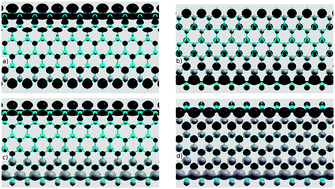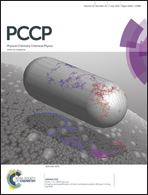Enhanced thermoelectric efficiency in ferromagnetic silicene nanoribbons terminated with hydrogen atoms
Abstract
Using ab initio methods we calculate thermoelectric and spin thermoelectric properties of silicene nanoribbons with bare, mono-hydrogenated and di-hydrogenated edges. Asymmetric structures, in which one edge is either bare or di-hydrogenated while the other edge is mono-hydrogenated (0H–1H and 2H–1H nanoribbons), have a ferromagnetic ground state and display remarkable conventional and spin thermoelectric properties. Strong enhancement of the thermoelectric efficiency, both conventional and spin ones, results from a very specific band structure of such nanoribbons, where one spin channel is blocked due to an energy gap while the other spin channel is highly conductive. In turn, 0H–2H and 2H–2H nanoribbons (with one edge being either bare or di-hydrogenated and the other edge being di-hydrogenated) are antiferromagnetic in the ground state. Accordingly, the corresponding spin channels are equivalent, and only conventional thermoelectric effects can occur in these nanoribbons.


 Please wait while we load your content...
Please wait while we load your content...